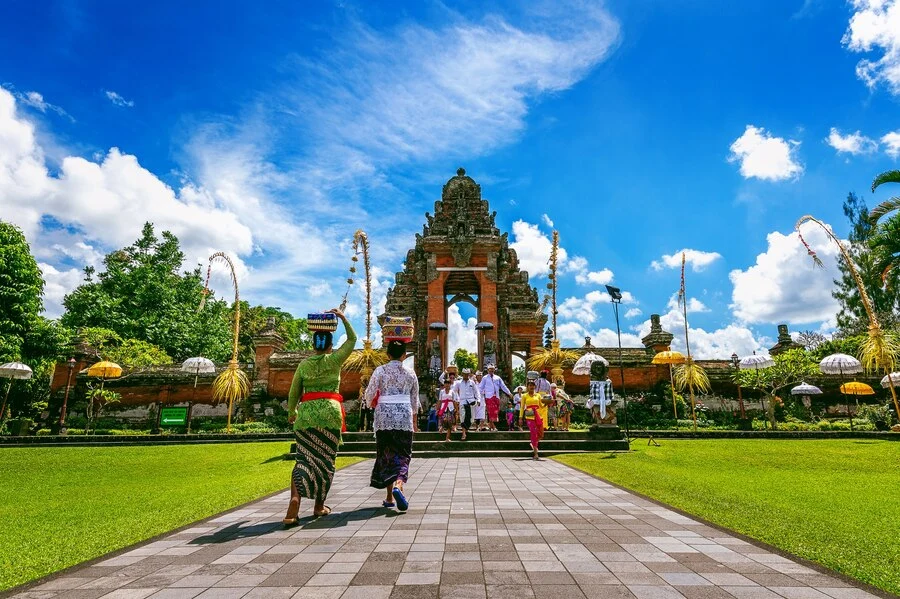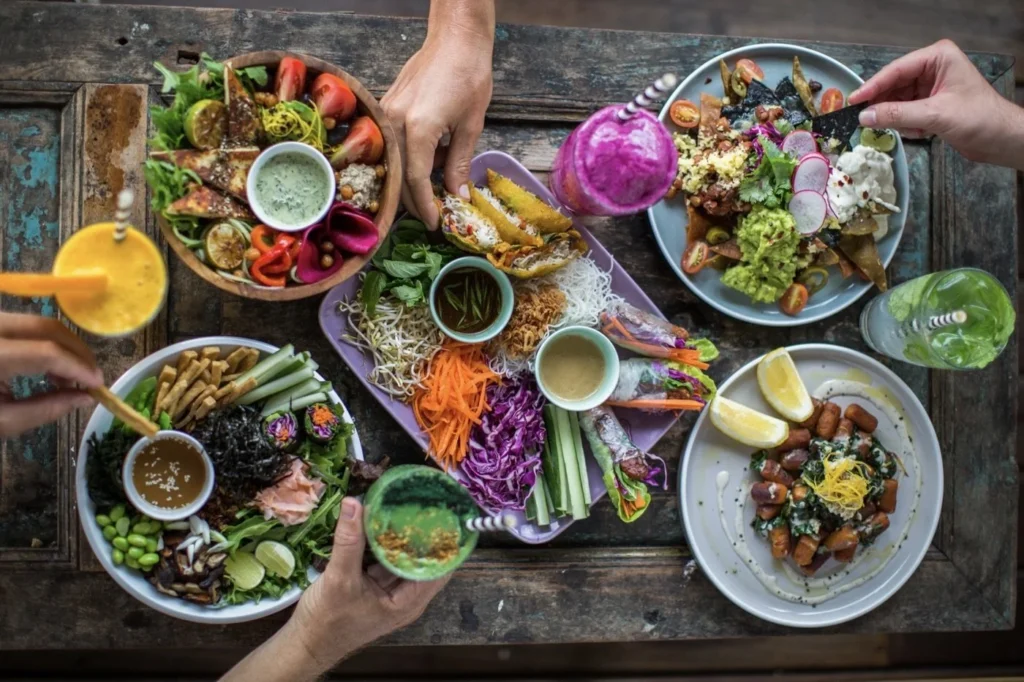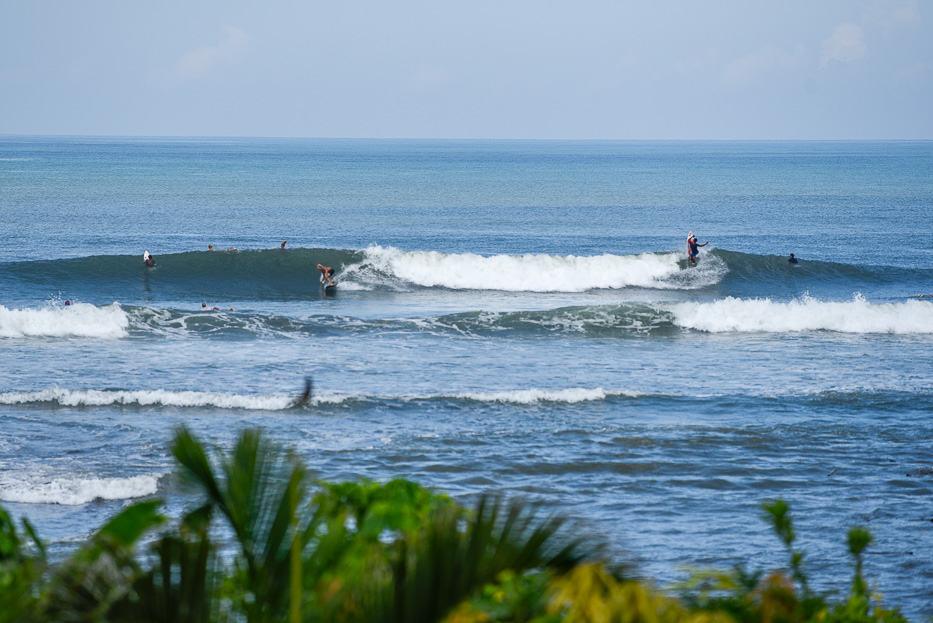Bali, often referred to as the “Island of the Gods,” offers a harmonious fusion of rich cultural heritage and stunning natural beauty. This synergy creates an unparalleled experience for visitors, where every aspect of the island reflects a deep connection between its people, traditions, and environment.
1. The Spiritual Heart of Bali: Temples and Traditions

Balinese culture is deeply rooted in Hinduism, which permeates daily life through rituals, ceremonies, and temple worship. The island is adorned with thousands of temples (pura), each serving as a focal point for spiritual activities and community gatherings.
- Tanah Lot – Perched atop a rocky outcrop amidst crashing waves, Tanah Lot is one of Bali’s most iconic sea temples. Its silhouette against the setting sun offers a mesmerizing view, making it a popular spot for both worshippers and tourists. The temple’s origins trace back to the 16th century, attributed to the priest Nirartha, who chose the site for its spiritual energy.
- Besakih Temple – Known as Bali’s “Mother Temple,” Besakih is the largest and holiest temple complex on the island. Situated on the slopes of Mount Agung, it comprises 23 separate temples, with the main one, Pura Penataran Agung, at its center. The temple’s history dates back over a thousand years, serving as a major pilgrimage site for Balinese Hindus.
- Uluwatu Temple – Located on the southwestern tip of the Bukit Peninsula, Uluwatu Temple sits majestically atop towering cliffs that drop straight into the sea. Beyond its architectural beauty, the temple is renowned for its nightly Kecak dance performances, where dancers enact episodes from the Ramayana against the backdrop of a stunning sunset.
- Tirta Empul – This sacred water temple, nestled in the village of Tampaksiring, is famed for its holy spring water, where Balinese Hindus partake in purification rituals. The temple complex, dating back to 926 AD, features traditional Balinese architectural elements and tranquil pools surrounded by lush greenery.
Daily life in Bali is imbued with spiritual practices, from the meticulous creation of canang sari (daily offerings) to the observance of numerous ceremonies and festivals. These rituals not only honor deities but also reinforce community bonds and the island’s cultural identity.
2. The Natural Wonders: Volcanoes, Rice Terraces, and Waterfalls
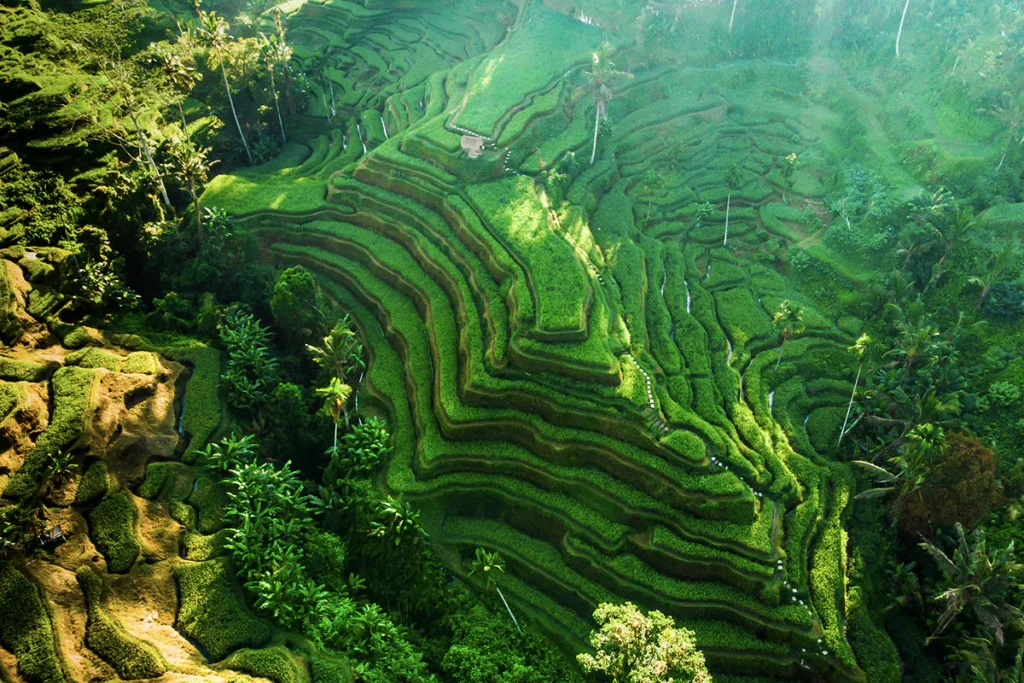
Bali’s diverse landscapes offer a plethora of natural attractions that captivate the senses and provide insight into the island’s ecological richness.
- Mount Batur & Mount Agung – Mount Batur, an active volcano located in the Kintamani district, is a popular trekking destination, especially for those seeking to witness a breathtaking sunrise from its summit. The caldera lake, Danau Batur, adds to the area’s scenic beauty. Mount Agung, Bali’s highest peak, holds significant spiritual importance, being home to the Besakih Temple. Trekking Mount Agung is more challenging but rewards adventurers with panoramic views of the island.
- Tegalalang Rice Terraces – Located north of Ubud, the Tegalalang Rice Terraces are renowned for their intricate layout and the traditional subak irrigation system, a UNESCO World Heritage practice. The terraces offer a glimpse into the Balinese agrarian lifestyle and provide stunning photo opportunities, especially during the golden hours of sunrise and sunset.
- Jatiluwih Rice Fields – Spanning over 600 hectares, the Jatiluwih Rice Fields in Tabanan Regency showcase expansive and well-preserved rice terraces. Less crowded than Tegalalang, Jatiluwih offers a serene environment where visitors can take leisurely walks or bike rides amidst the lush greenery.
- Sekumpul & Tegenungan Waterfalls – Sekumpul Waterfall, located in the Singaraja region, is often considered Bali’s most beautiful waterfall, featuring multiple cascades surrounded by dense jungle. Reaching it requires a trek through the forest, but the sight is well worth the effort. Tegenungan Waterfall, closer to Ubud, is more accessible and popular among tourists, offering a refreshing spot for a swim.
These natural wonders not only provide aesthetic pleasure but also play a crucial role in the island’s ecology and the livelihoods of its inhabitants.
3. Balinese Arts and Dance
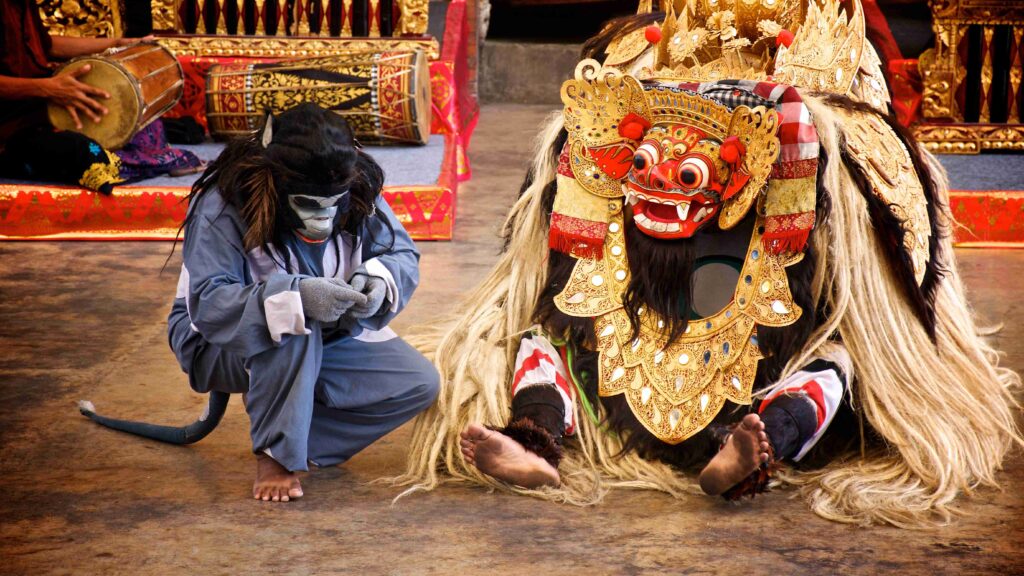
Artistic expression is a cornerstone of Balinese culture, manifesting in various forms that have been refined over centuries.
- Traditional Dances – Balinese dance is a dynamic and expressive art form that often narrates stories from Hindu epics. The Barong Dance depicts the battle between good and evil, featuring elaborate costumes and masks. The Legong Dance, characterized by intricate finger movements and precise gestures, is traditionally performed by young girls and is known for its grace and elegance. The Kecak Dance, also known as the “monkey chant,” involves a chorus of male performers chanting rhythmically while enacting scenes from the Ramayana.
- Visual Arts – Bali boasts a rich tradition of visual arts, including painting, sculpture, and woodcarving. The village of Ubud serves as the artistic hub, with numerous galleries and workshops showcasing traditional and contemporary Balinese art. Artisans in villages like Mas and Celuk are renowned for their woodcarving and silver jewelry craftsmanship, respectively.
- Crafts – Handicrafts such as batik textiles, pottery, and basket weaving are integral to Balinese culture. These crafts are not only functional but also hold cultural significance, often used in rituals and daily life. Visitors can participate in workshops to learn these traditional crafts firsthand.
The arts in Bali are deeply intertwined with religious and social life, serving both aesthetic and ceremonial purposes.
4. Adventure and Wellness Retreats

Bali offers a harmonious blend of thrilling adventures and serene wellness retreats, catering to both adrenaline seekers and those seeking rejuvenation.
Adventure Activities:
- Surfing: Bali is renowned for its world-class surfing spots. Beaches like Uluwatu and Canggu offer consistent waves suitable for both beginners and seasoned surfers. Numerous surf schools and rental shops are available, making it accessible for all skill levels.
- Diving and Snorkeling: The waters around Bali, particularly near Nusa Penida and Amed, are teeming with vibrant coral reefs and diverse marine life. Diving enthusiasts can explore sites like the USAT Liberty shipwreck in Tulamben, while snorkelers can enjoy the clear waters and colorful fish.
- Hiking: For trekking enthusiasts, Mount Batur offers a relatively easy hike with the reward of a stunning sunrise view from the summit. For a more challenging adventure, Mount Agung provides a rigorous trek with panoramic vistas of the island.
Wellness Retreats:
Bali has emerged as a global hub for wellness, offering a plethora of retreats that focus on holistic health, yoga, and spiritual healing.
- Yoga and Meditation: Ubud, often considered the spiritual heart of Bali, hosts numerous yoga studios and retreat centers. Places like the Yoga Barn offer classes ranging from traditional yoga practices to meditation and healing sessions.
- Spa Treatments: Balinese spa treatments are renowned for their therapeutic benefits. Traditional massages, often incorporating local herbs and oils, provide relaxation and rejuvenation. Many resorts offer spa packages that include treatments like aromatherapy, reflexology, and flower baths.
- Detox and Wellness Programs: Several retreats offer comprehensive wellness programs that include detox diets, colonics, and holistic therapies aimed at cleansing the body and mind. These programs often combine nutrition, exercise, and therapeutic treatments to promote overall well-being.
Whether you’re seeking the thrill of adventure or the tranquility of a wellness retreat, Bali provides a diverse array of experiences that cater to all preferences.
5. Bali’s Culinary Delights

Balinese cuisine is a rich tapestry of flavors, reflecting the island’s cultural diversity and abundant natural resources. The food is characterized by the use of aromatic spices, fresh herbs, and a balance of sweet, salty, sour, and spicy flavors.
Must-Try Dishes:
- Babi Guling: A traditional Balinese dish, babi guling is a roasted suckling pig stuffed with a mixture of spices such as turmeric, coriander, lemongrass, and garlic. The skin is crispy, while the meat remains tender and flavorful. It’s often served with rice, lawar (a mix of vegetables, coconut, and minced meat), and spicy sambal.
- Nasi Goreng: Literally translating to “fried rice,” nasi goreng is a staple in Indonesian cuisine. The dish typically includes rice stir-fried with a combination of meats (such as chicken or shrimp), vegetables, sweet soy sauce, and spices, all topped with a fried egg. It’s a versatile dish enjoyed at any time of day.
- Bebek Betutu: This is a traditional Balinese dish where a duck is marinated with a rich blend of spices, wrapped in banana leaves, and slow-cooked until tender. The result is a flavorful and aromatic dish that’s often reserved for special occasions.
- Sate Lilit: A unique Balinese take on satay, sate lilit involves minced meat (commonly fish, chicken, or pork) mixed with grated coconut, spices, and herbs. The mixture is then molded onto bamboo sticks or lemongrass stalks and grilled, imparting a distinct flavor.
- Lawar: A traditional mix that combines minced meat, grated coconut, vegetables, and a blend of spices. There are various versions of lawar, some incorporating animal blood for added flavor, while others are purely vegetarian. It’s a common side dish accompanying many Balinese meals.
Dining Experiences:
Bali offers a wide range of dining options, from humble warungs (small family-owned eateries) serving traditional dishes to high-end restaurants offering international and fusion cuisines. In areas like Seminyak and Ubud, the culinary scene is particularly vibrant, with establishments focusing on farm-to-table concepts, vegan and vegetarian menus, and innovative gastronomy.
Exploring Balinese cuisine provides insight into the island’s culture and traditions, making it an essential part of any visit to Bali.
Where to Stay in Bali?

To fully embrace the beauty of Bali’s culture and nature, here are some of the best hotels in various locations, each offering a unique experience:
Ubud (Cultural and Natural Retreat)
- Maya Ubud Resort and Spa – A luxurious retreat surrounded by lush rainforests, offering river-facing villas and world-class spa treatments.
- Alila Ubud – An elegant hillside resort with an infinity pool overlooking the Ayung River valley, ideal for a peaceful escape.
- Kamandalu Ubud Resort – Designed like a traditional Balinese village, this resort offers private pool villas and an immersive cultural experience.
Canggu (Surfing and Trendy Beach Vibes)
- Tugu Bali Hotel – A boutique hotel blending Balinese heritage and luxury, featuring antique-filled suites and direct beach access.
- Regent Bali Canggu – An upper luxury hotel blending modern elegance with Balinese tradition, featuring sumptuous suites and premium amenities in the heart of Canggu.
Seminyak (Luxury and Nightlife)
- The Seminyak Beach Resort & Spa – A stylish beachfront resort with an infinity pool, elegant villas, and easy access to Seminyak’s lively nightlife.
Nusa Dua (Resort and Relaxation)
- Grand Hyatt Bali – A five-star resort with lush gardens, lagoon-style pools, and a pristine beachfront perfect for families and honeymooners.
- Nusa Dua Beach Hotel and Spa – A Balinese-style resort offering luxurious suites, cultural performances, and a serene private beach.
Uluwatu (Cliffside Views and Surfing)
The Oberoi Beach Resort – A tranquil beachfront sanctuary with traditional thatched-roof villas and impeccable personalized service.
AYANA Resort Bali – A world-famous resort known for its cliffside Rock Bar, ocean-view infinity pools, and indulgent spa experiences.
Each of these accommodations provides a unique experience that reflects the essence of Bali’s harmonious blend of culture and nature.
